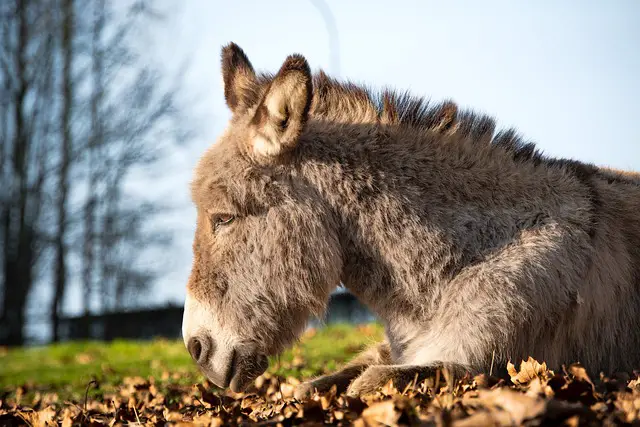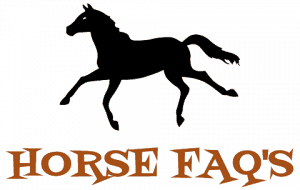They say that you can’t judge a book by its cover, but when it comes to donkeys, mules, and hinnies, appearances can be deceiving. While these three animals may look similar at first glance, they are in fact distinct species with their own unique characteristics. Learning the differences between them is essential for anyone who works with these animals, whether as a farmer, a veterinarian, or simply an enthusiast.
Like the saying goes, ‘don’t judge a book by its cover,’the same goes for these animals. Donkeys, mules, and hinnies may look alike, but they are actually quite different from each other. Donkeys are a unique species, while mules and hinnies are the result of crossbreeding between a horse and a donkey. Understanding the physical, genetic, and temperamental differences between these animals is crucial for anyone who wants to work with them or appreciate them as individuals.
In this article, we will delve deeper into the world of donkeys, mules, and hinnies, exploring what makes each one unique and how they are best suited for different tasks and environments.

Unique Species vs. Hybrid
While donkeys are their own unique species, mules and hinnies are hybrids resulting from crossbreeding a donkey and a horse with the genders of the parents determining whether it is a mule or a hinny.
Mules are the result of breeding a male donkey with a female horse, while hinnies are the offspring of a male horse and a female donkey.
Both mules and hinnies inherit characteristics from both their parents, resulting in a unique combination of traits.
Comparative advantages of breeding mules and hinnies include their ability to inherit desirable traits from both species, such as the strength and stamina of a donkey and the trainability of a horse.
However, breeding challenges exist as well. Donkeys and horses have a different number of chromosomes, making it difficult for the sperm and egg to properly unite. Additionally, mules and hinnies are sterile, meaning they cannot reproduce, which limits their usefulness as breeding animals.
Despite these challenges, the hybridization of donkeys and horses has resulted in animals that possess unique and valuable traits.
Physical Differences
In terms of their physical characteristics, mules can be compared to a blend of their equine and asinine parents, similar to how a blend of different colors creates a unique hue. Mules tend to inherit a flatter spine and longer ears from their donkey parent, while also possessing a more refined head and a sleeker coat similar to their horse parent. This blending of traits results in a hybrid animal that is generally larger and stronger than a donkey, but smaller and more compact than a horse.
Coat variations between donkeys, mules, and horses are also noticeable. Donkeys have a thicker, coarser coat than horses, which is well-suited to their natural habitat of arid, desert regions. Similarly, mules have a thicker coat than horses, but not as thick as a donkey’s. Mules can also have a wide range of coat colors and patterns, which are often influenced by their horse parent.
Size differences are also apparent, with donkeys being smaller and more stocky than horses, while mules tend to be larger and stronger than donkeys but still smaller than horses. Overall, the physical differences between donkeys, mules, and horses are significant and contribute to their unique characteristics and abilities.
History and Work Abilities
The history and work abilities of donkeys and mules have made these animals significant to human society for centuries.
Donkeys were domesticated around 6000 years ago, and were used for transportation, carrying heavy loads, and as a source of milk and meat. They were an essential part of ancient civilizations such as Egypt, Greece, and Rome. Donkeys also played a significant role in the development of the American West, as they were used for transportation and labor during the gold rush and in agriculture.
Mules were first bred in the Middle East around 3000 years ago, and were used for transportation and agricultural work. They became popular in the United States during the 1800s as they were able to work harder and longer than horses. Today, mules are used for a variety of purposes, including transportation, agricultural work, and as pack animals for hiking and camping.
The cultural significance of donkeys and mules is evident in the many festivals and celebrations around the world that honor these animals, such as the Feast of Saint Anthony in Lisbon, Portugal, and the Day of the Donkey in Mexico.
Genetic Inheritance
Genetic inheritance plays a significant role in the physical and behavioral traits of mules and hinny, with research showing that mules inherit 63% of their genetic material from their mother (horse) and 37% from their father (donkey). This genetic makeup results in mules having a combination of physical traits from both their parents, such as the donkey’s shorter, thicker mane and the horse’s longer legs and smoother coat. Additionally, mules tend to inherit their behavior traits from their mother, which may result in a calmer temperament and a greater willingness to be trained.
Mule breeding requires a male donkey and a female horse, and the process of creating a mule is not an easy one. The offspring of a donkey and a horse is called a hinny, but they are much rarer than mules because the offspring is often unable to survive.
When it comes to genetic inheritance, hinny’s inherit 64% of their genetic material from their mother (donkey) and 36% from their father (horse). Overall, genetic inheritance plays a crucial role in the physical and behavioral traits of both mules and hinny and understanding the genetics behind these animals can help in their breeding and training.
Vision and Perception
Vision and perception are important factors to consider when studying the physical and behavioral traits of equine hybrids.
Mules, in particular, have demonstrated superior vision and sensory abilities compared to both donkeys and horses. This is likely due to the genetic inheritance of both parents, which allows mules to have a wider range of vision and perceive their environment more accurately. Mules also have a higher ability to differentiate between different shades of colors, which can be beneficial for activities such as herding or racing.
Eye health is also an important aspect to consider when examining vision and perception in equine hybrids. Donkeys, for example, have longer eyelashes and thicker eyelids than horses, which can protect their eyes from dust and debris. Additionally, donkeys have a third eyelid, which is a transparent membrane that moves across the eye to help lubricate and protect it. Mules inherit these traits from their donkey parent, making them less susceptible to eye injuries and infections.
Overall, understanding the unique vision and sensory abilities of equine hybrids can help us better appreciate and utilize their strengths in various activities.
Temperament and Training
Temperament and training play a crucial role in the behavior and performance of equine hybrids, and can significantly impact their success in various activities. Donkeys and mules have distinct personalities, with donkeys being known for their level-headedness and mules being more trainable and responsive to positive reinforcement.
When it comes to training techniques, repetition and consistency are key for both donkeys and mules. Positive reinforcement is often more effective than negative reinforcement, as it encourages good behavior and strengthens the bond between the animal and trainer. However, it is important to note that mules, in particular, can become aggressive if not properly trained and socialized.
In terms of temperament differences, donkeys are known for their stoicism and tendency to not show signs of discomfort or distress until an ailment has significantly progressed. This can make it more difficult to identify and address health issues in donkeys. On the other hand, mules tend to show more acute signs of pain or distress, making them easier to diagnose and treat.
Additionally, mules are generally easier to train than donkeys, making them more suitable for riding activities and shows. However, they can still be stubborn and require patience and understanding from their trainers. Ultimately, a successful training approach for both donkeys and mules involves understanding their individual personalities and behaviors, and tailoring the training to their specific needs and abilities.
Hinny vs. Mule
Crossbreeding between male horses and female donkeys produces a hinny, which is similar to a mule in appearance but has a few physical and behavioral differences. Hinny tends to be smaller than mules and have a more horse-like appearance, with a narrower body and shorter ears. They also have a shorter mane and tail compared to mules. Hinny inherits more characteristics from the horse parent, including their gait and conformation.
However, like mules, hinnies are sterile and cannot reproduce. Breeding challenges are one of the reasons why hinnies are rarer than mules. Male horses and female donkeys have different numbers of chromosomes, which can result in failed pregnancies or offspring with chromosomal abnormalities. Moreover, since donkeys and horses have different gestation periods, successful breeding requires careful timing and monitoring.
Despite the challenges, hinny and mule breeding have been successful and have allowed us to enjoy the best traits of both donkeys and horses.
Frequently Asked Questions
Are there any health concerns unique to donkeys and mules?
Donkeys and mules have unique healthcare needs, including dental care, parasite control, and vaccination against specific diseases. Proper nutrition is crucial, as they require a high-fiber diet and may suffer from obesity-related health issues if overfed.
Can donkeys and mules interbreed with other species?
Cross species hybrids between donkeys and other equine species, including horses and zebras, are possible but rare. However, due to ethical implications, such breeding is not recommended and is often discouraged by animal welfare organizations.
What is the lifespan of a donkey or mule?
The lifespan of a donkey or mule can vary depending on factors such as genetics, diet, and living conditions. Health concerns not related to other H2s include dental issues, parasites, and respiratory problems. Regular veterinary care can help ensure a longer lifespan.
How do donkeys and mules communicate with each other?
How do donkeys and mules communicate with each other? These animals rely heavily on non-verbal communication, including body language, vocalizations, and scents. Social behavior is also important, with hierarchy established through displays of dominance and submission.
Are there any cultural or religious significances associated with donkeys and mules?
Donkeys and mules have cultural relevance and religious symbolism in various cultures around the world. In Christianity, for example, the donkey is associated with Jesus’ entry into Jerusalem. In Hinduism, the donkey is seen as a symbol of ignorance.
